有限压缩多孔弹性模型装置系统,Poroelastic Model in Confined Compression,双相材料侧限压缩仪,CONFINED COMPRESSION tester,wu膨胀变形侧限压缩测试系统,受限压缩多孔弹性模型分析系统,关节软骨侧限压缩力测试系统,软骨单个点位多次压缩力测试系统,软骨盘受限压缩测试系统,wu侧限压缩仪,wu侧限压缩系统
型号:BMM MachOne
联系人:李先生
联系电话:18618101725
品牌:BMM
多功能组织材料生物力学特性、电位分布测试分析表征系统
-之侧限压缩测试和wu侧限压缩测试
侧限压缩(confined compression):受压样品的周围有限制,受压过程中除垂直方向变形外,不会侧向膨胀变形。

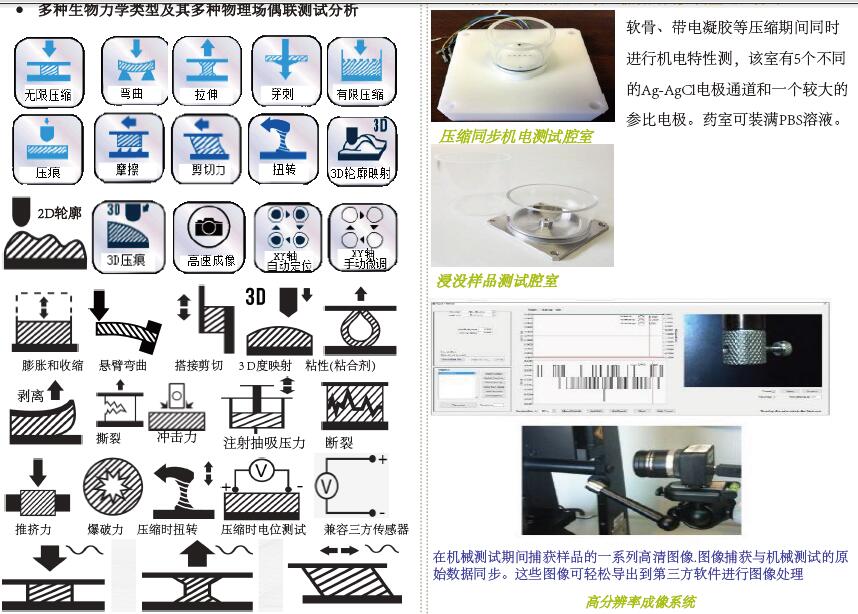
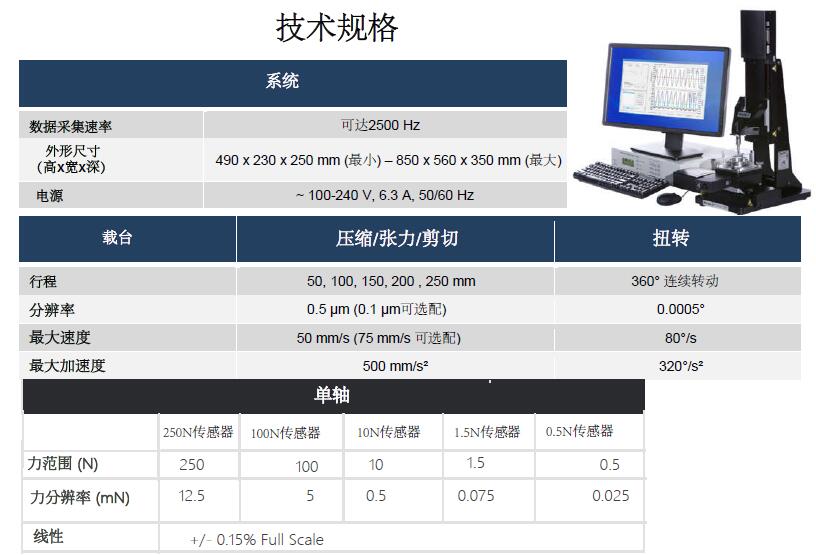


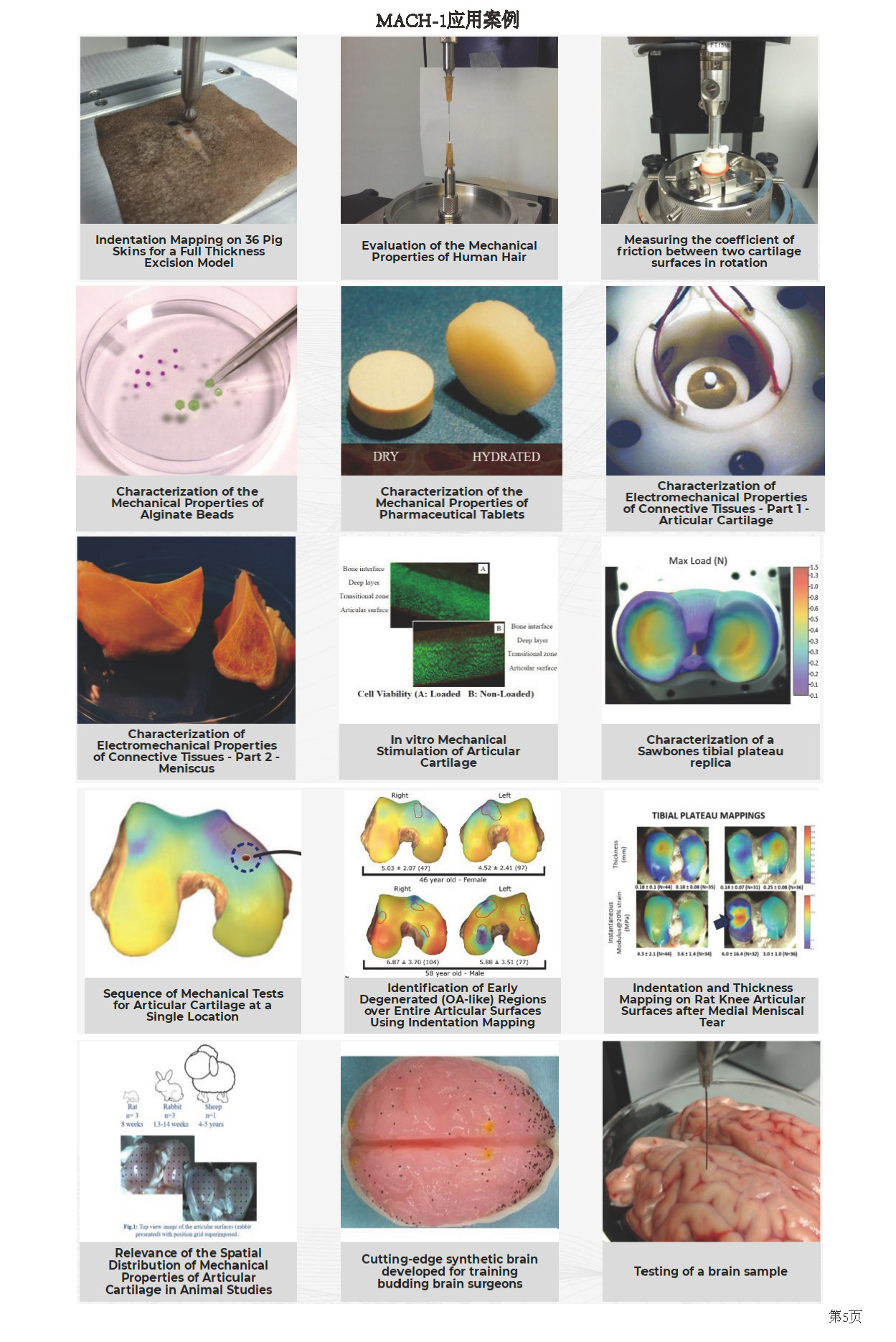
该系统是能集成压缩、张力、剪切、摩擦、扭转和2D/3D压痕、3D轮廓及多力混合耦连测试的一体化微观力学测试装置。能对生物组织、聚合物、凝胶、生物材料、胶囊、粘合剂和食品进行精密可靠的机械刺激和表征。允许表征的机械性能包括刚度、强度、模量、粘弹性、塑性、硬度、附着力、肿胀和松弛位移控制运动。
特点
1、适用样品范围广:
1.1、从骨等硬组织材料到脑组织、眼角膜等软组织材料
1.2、从粗椎间盘的样品到j细纤维丝
2、通高量压痕测试分析
2.1、三维法向压痕映射非平面样品整个表面的力学特性
2.2、48孔板中压痕测试分析
3、力学类型测试分析功能齐
模块化集成压缩、张力、剪切、摩擦、扭转、穿刺、摩擦和2D/3D压痕、3D表面轮廓、3D厚度等各种力学类型支持,微观结构表征及动态力学分析研究
4、高分辨率:
4.1、位移分辨率达0.1um
4.2、力分辨率 达0.025mN
5、 行程范围广:50-250mm
6、体积小巧、可放入培养箱内
7 、高变分辨率成像跟踪分析
8、多轴向、多力偶联刺激
9、活性组织电位分布测试分析
10、产品成熟,文献量达 上千篇
侧限压缩仪测试可测量材料承受轴向压缩负载而不会垂直于力膨胀的能力。通常在双相材料(一相为液体)(例如多孔弹性材料)上进行密闭压缩测试。该测试通常在密闭的圆柱形腔室中进行,其中样品完充满了腔室的体积。活塞用于向样品施加应力。在液相不可压缩的情况下,密闭压缩室的至少一个壁必须是多孔的,以使材料变形。当流体停止流过时,总模量(Ha)对应于处于平衡状态的材料的刚度。
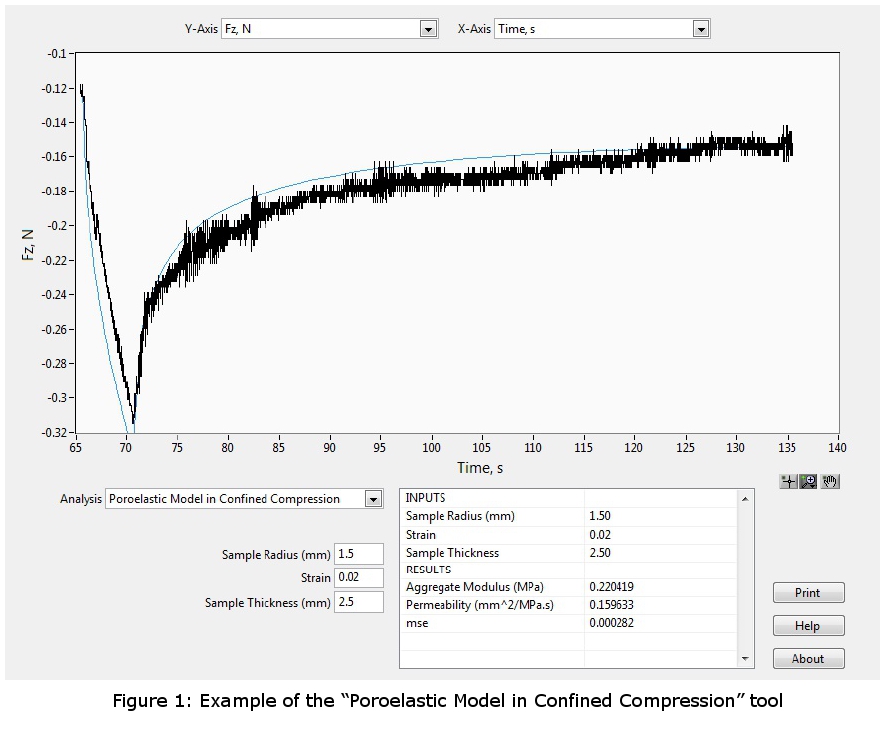
MachOne分析-受限压缩中的多孔弹性模型-示例(MachOne Analysis - Poroelastic Model in Confined Compression - Example)
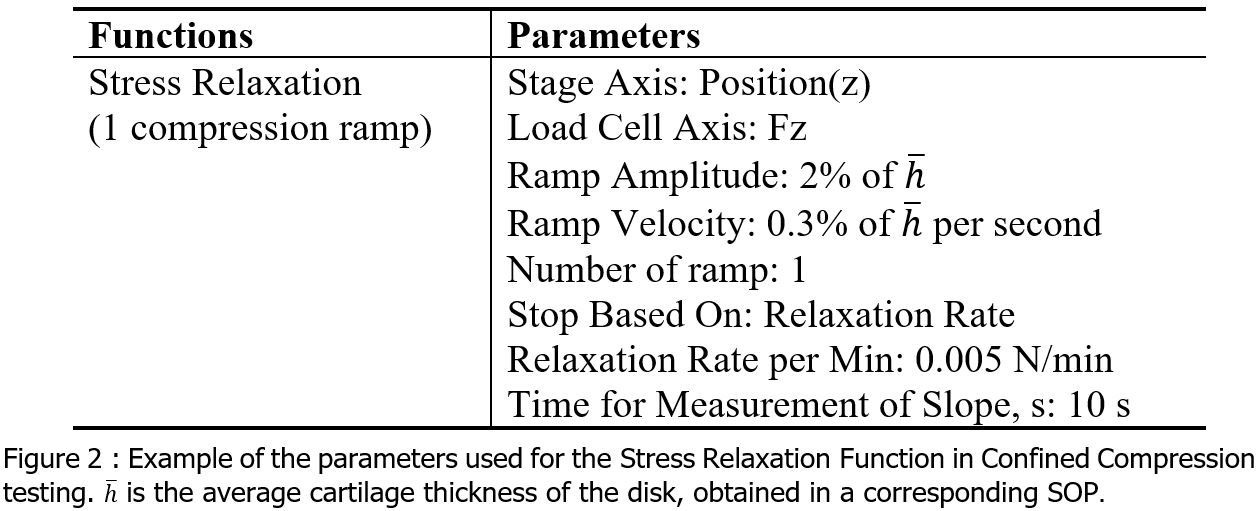
MachOne分析-有限压缩中的多孔弹性模型-参数(MachOne Analysis - Poroelastic Model in Confined Compression - Parameters)
侧限压缩相关文献:
Literature ()
wu侧限压缩(Unconfined compression):受压样品的周围基本上没有限制,受压过程中除垂直方向变形外,还将发生侧向的膨胀变形。
4.1 This test method provides information regarding the behavior of cellular materials under compressive loads. Test data is obtained, and from a complete load-deformation curve it is possible to compute the compressive stress at any load (such as compressive stress at proportional-limit load or compressive strength at maximum load) and to compute the effective...Read More
The test procedures provide a standard method of obtaining data for research and development, quality control, acceptance and rejection under specifications, and special purposes.
The data obtained by these test methods are applicable to the material under conditions of the particular test and are not necessarily the same as obtained in other environments...Read More
These test methods are useful in comparing stiffness of rubber materials in compression. They can be used by rubber technologists to aid in development of materials for compressive applications.
1.1 These test methods cover two test procedures for determining the compression-deflection characteristics...Read More
When uniaxial force is applied to a solid, it deforms in the direction of the applied force, but also expands or contracts laterally depending on whether the force is tensile or compressive. If the solid is homogeneous and isotropic, and the material remains elastic under the action of the applied force, the lateral strain bears a constant relationship to...Read More
This specification covers the material requirements and characterization techniques for glass and glass-ceramic biomaterials intended for use as bulk porous or powdered surgical implants, or as coatings on surgical devices, but not including drug delivery systems. Glass and glass-ceramic biomaterials should be evaluated thoroughly for biocompatibility before human use....Read More
5.1 Spinal implants are generally composed of several components which, when connected together, form a spinal implant assembly. Spinal implant assemblies are designed to provide some stability to the spine while arthrodesis takes place. These test methods outline standard materials and methods for the evaluation of different spinal implant assemblies so...Read More
5.1 Intervertebral body fusion device assemblies are generally simple geometric-shaped devices which are often porous or hollow in nature. Their function is to support the anterior column of the spine to facilitate arthrodesis of the motion segment. This test method outlines materials and methods for the characterization and evaluation of the mechanical performance...Read More
This guide is aimed at providing a range of in vivo models to aid in preclinical research and development of tissue engineered medical products intended for the clinical repair or regeneration of articular cartilage.
This guide includes a description of the animal models, surgical considerations, and tissue processing as well as the qualitative and quantitative...Read More
This procedure describes a standard method to realize unconfined compression on a disk-shaped sample using the MachOneTM mechanical tester.
Scope
This procedure can be used for the unconfined compression of a disk-shaped sample. It is highly recommended to use standard protocol for sample preparation to facilitate positioning...Read More
This procedure describes a method to extract mechanical parameters from MachOne result files generated during an unconfined compression of a sample (e.g. an osteochondral (as per MA056-SOP03-D) or a disk (as per MA056-SOP05-D)). It also describes the creation of corresponding “.map” characterization file.
Scope
This procedure can...Read More
Deep tissue injury (DTI) is a severe kind of pressure ulcers formed by sustained deformation of muscle tissues over bony prominences. As a major clinical issue, DTI affects people with physical disabilities, and is obviously related to the load-bearing capacity of muscle cells in various in-vivo conditions. It is important to provide a preventive approach to help muscle cells...Read More
Abstract: Designing protective systems for the human head—and, hence, the brain—requires understanding the brain’s microstructural response to mechanical insults. We present the behavior of wet and dry porcine brain undergoing quasi-static and high strain rate mechanical deformations to unravel the effect of hydration on the brain’s biomechanics. Here, native ‘wet’ brain samples...Read More
We present an electrodeposition technique for fabricating tubular alginate structures. In this technique, two electrodes (anode and cathode) are suspended in a solution of alginate and insoluble calcium carbonate particles, and the application of an electrical potential produces a localized pH change at the anode surface causing suspended divalent cations to become soluble and cross-link the alginate....Read More
Arylsilicones are widely exploited for their thermal and optical properties. The creation of phenylsilicone elastomers with specific physical properties is typically done by a ‘one off’ formulation and test process. We demonstrate that high?throughput synthesis methods can be used to rapidly prepare a series of arylsilicone elastomers and then assess the relative impact of different aryl groups...Read More
Bacteriophages are essentially bionanoparticles with a protein coat, the composition of which can be controlled with atomic precision via genetic engineering, a property that makes them superior to synthetic nanoparticles as building blocks for bottom-up synthesis of multifunctional materials with advanced properties. We report hierarchically structured hydrogels of self-organized M13 bacteriophage...Read More
This thesis describes the effects of ionic solutions on biopolymer films and the development of a 3D printed personalized wound dressing.
Chitosan, gelatin, and composite chitosan/gelatin films were exposed to NaCl, Na2SO4, and CaCl2 solutions with varying ionic strength and their swelling and dissolution properties were measured. In addition, the release of the small ionic molecules Rhodamine...Read More
Noncanonical Wnt signaling in stem cells is essential to numerous developmental events. However, no prior studies have capitalized on the osteoinductive potential of noncanonical Wnt ligands to functionalize biomaterials in enhancing the osteogenesis and associated leton formation. Here, we investigated the efficacy of the functionalization of biomaterials with a synthetic Wnt5a mimetic ligand...Read More